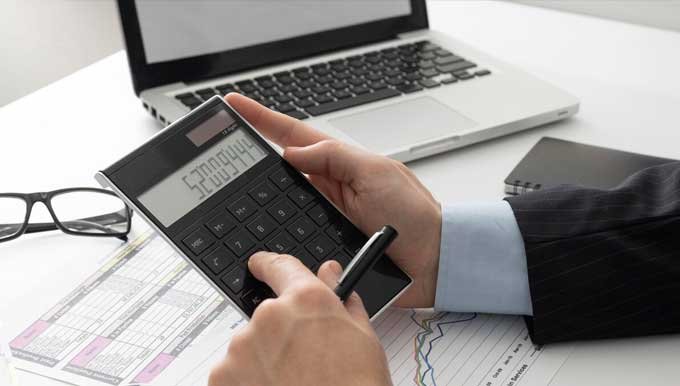Table of Contents
Introduction to the Break-Even Point Calculator
Determining when your business covers its costs is a key part of financial planning. The Break-Even Point Calculator from Dexovise is a free tool that finds the sales level where your revenue equals your costs.
Enter your cost and price details to see your break-even point at once.
More Business Calculators
What Is a Break-Even Point
The break-even point (B/E Point) is the level of sales where a business’s total revenue matches its total costs, resulting in neither profit nor loss. It shows how much you need to sell to cover all fixed costs and variable costs tied to your products or services.
This point is important because it tells us when a business starts to earn profit beyond covering its expenses.
At the break-even point, every dollar of revenue pays for the costs of running the business, like rent, materials, and labor, without leaving extra for profit. Beyond this point, additional sales begin to generate net income, while sales below it lead to a loss.
Knowing the break-even point helps us understand the minimum sales needed to keep a business financially stable, guiding decisions on pricing, production, and budgeting.
Read More: Cash Ratio Calculator
What Is Fixed Cost
Fixed costs are the expenses a business pays no matter how much it sells or produces. These costs stay the same over a period, whether the business makes one item or many.
In Fixed costs, total cost will remain fixed irrespective of the volume of output but the fixed cost per unit vary.
They are a key part of finding the break-even point because they must be covered by sales revenue before any profit can be made.
Examples of fixed costs include rent for a store or office, salaries for regular staff, insurance payments, depreciation on equipment, and utility bills that don’t change with production.
For instance, a bakery pays $2,000 a month for rent whether it sells 100 loaves or 1,000.
Fixed costs matter because they set the base amount a business needs to earn through sales to avoid losing money, shaping the break-even calculation.
What Is Variable Cost
Variable costs are the expenses that change depending on how much a business produces or sells. They rise when production goes up and fall when it goes down, tied directly to the making or selling of goods or services.
In Variable Costs, total cost will vary depending on the volume of output but the variable cost per unit remain fixed.
These costs are central to the break-even point because they affect how much revenue is needed to cover all expenses.
Examples of variable costs include raw materials, like flour and sugar for a bakery, direct labor for workers paid per item, packaging supplies, and shipping fees that grow with sales volume.
For instance, if a bakery uses $1 of ingredients per loaf, the variable cost is $100 for 100 loaves and $1,000 for 1,000 loaves.
Variable costs are important because they show how expenses increase with sales, helping us see what revenue must reach to break even.
Read More: Current Ratio Calculator
How to Calculate Your Break-Even Point
Determining the break-even point is a process that helps us find the sales needed for a business to cover its total costs. It involves using fixed costs, variable costs, and the selling price of your product or service to reach a clear result.
BE point calculation shows the level of sales where revenue matches all expenses, results in no profit or loss.
The break-even point is found by dividing total fixed costs by the contribution margin per unit, which is the selling price per unit minus the variable cost per unit.
Another way is to calculate it in sales dollars, dividing fixed costs by the contribution margin ratio, found by taking the contribution margin per unit and dividing it by the selling price.
These methods tell us how many units or dollars of sales are needed to cover fixed costs and variable costs together.
The Break-Even Point Calculator simplifies this—just enter your fixed costs, variable costs, and selling price, and it shows the result accurately and clearly.
Break-Even Formula with an Example
The break-even point relies on a formula that brings together fixed costs, variable costs, and selling price to find the sales needed to balance revenue and expenses. This calculation help to find the sales level at which total cost equals total revenue, helping to avoid any loss to the firm.
Let’s look at a coffee shop to show how it works in practice.
| Category | Amount ($) |
| Fixed Costs | |
| Rent | 3,000 |
| Staff Salaries | 4,000 |
| Insurance | 500 |
| Total Fixed Costs | 7,500 |
| Variable Costs (per coffee) | |
| Ingredients | 1.50 |
| Cups and Supplies | 0.50 |
| Total Variable Cost per Unit | 2.00 |
| Selling Price per Coffee | 5.00 |
To find the break-even point in units, we use the formula:
Contribution per unit = Selling Price per Unit – Variable Cost per Unit
= $5 – $2 = $3
Break-Even Point (Units) = Total Fixed Costs ÷ (Selling Price per Unit – Variable Cost per Unit)
= 7,500 / $3 = 2,500 units
This coffee shop needs to sell 2,500 coffees a month to break even, where revenue of 2,500 times 5.00 equals 12,500, covering 7,500 in fixed costs and 2,500 times 2.00, or 5,000, in variable costs.
This result shows that selling 2,500 coffees brings revenue and costs into balance, leaving no loss or profit.
How to Analyse Your Break-Even Point
When you get your break-even point from the calculator, it’s valuable to understand what this number means for your business. The break-even point shows how many units or dollars of sales your business needs to cover all fixed costs and variable costs.
It helps us know the minimum sales required to keep your business from losing money.
If your break-even point is low, it means your business can cover costs with fewer sales, often because fixed costs are small or the contribution margin is high.
A high break-even point, shows that more sales are needed, perhaps due to high fixed costs or low selling prices compared to variable costs.
For example, a shop with fixed costs of $10,000, a selling price of $20, and variable costs of $12 per item has a contribution margin of $8 and a break-even point of 10,000 divided by 8, or 1,250 units.
This tells us the shop needs 1,250 sales to balance its costs, giving a clear target for planning. Comparing your break-even point to actual sales helps us see if your business is safely profitable or needs changes to reach stability.
How to Reduce Your Break-Even Point
When you lower your break-even point, your business can cover its total costs with fewer sales, improving its financial position. This point reflects the sales level where revenue equals fixed costs and variable costs combined.
The following measures will help you reduce it:
- Decrease total fixed costs by renegotiating contracts, such as rent or insurance, to lessen the regular expenses that sales must cover.
- Lower variable costs per unit through bulk purchasing of materials, reducing the cost tied to each product sold and raising the contribution margin.
- Increase the selling price per unit where market conditions allow, boosting revenue per sale to cover fixed costs with fewer units.
- Shift sales focus to products with higher contribution margins, requiring less volume to meet the total cost of operations.
- Improve production efficiency to cut waste in materials or labor, decreasing variable costs and easing the sales level needed for balance.
These measures are significant because they allow your business to reach the point of covering costs with less sales effort, strengthening its stability.
Read More: Debt Equity Ratio Calculator
Factors That Increase Your Break-Even Point
An increase in your break-even point means your business needs more sales to cover its total costs, affecting its financial planning. This point shows the sales level at which revenue matches all operating expenses.
The following factors contribute to raising it:
- Higher total fixed costs, such as increased rent or new equipment leases, demand more revenue to balance expenses before profit begins.
- Rising variable costs per unit, like costlier raw materials, reduce the contribution margin, requiring a greater sales volume to cover costs.
- Lower selling prices due to competition or discounts decrease revenue per unit, pushing the sales level needed to meet total costs higher.
- Adding products with lower contribution margins shifts sales to items that cover fixed costs more slowly, elevating the break-even point.
- Expanding operations with added staff or facilities raises fixed costs, increasing the revenue needed to reach the point of no loss.
More to explore
Finding your break-even point is a clear way to understand your business’s cost structure and sales needs. Explore further tools and services at Dexovise to support your business in achieving financial balance and growth.
About the Authors

Archana N
Senior Writer & Content Strategist
Archana N is a seasoned content strategist and senior writer with over 12 years of …

GlimMarket Editorial
Editors, Writers, and Reviewers
The GlimMarket Editorial Team is responsible for developing and maintaining the…

Dileep K Nair CMA
Senior Editor & Expert Reviewer
Dileep K Nair is a Certified Management Accountant (CMA) from IMA, USA and brings over 19 years…
This guide is provided for informational purposes only and does not constitute financial, investment, or legal advice. Business owners should consult qualified financial or legal professionals before making investment decisions.
Related Articles

US–EU Trade Deal Brings 15% Tariff on Imports: What It Means for Businesses, Consumers, and Investors

Historic US–EU Trade Deal Slaps 15% Tariff on EU Imports: Who Wins and Who Loses?

India, UK Sign Landmark Free Trade Agreement: 99% Tariff Free Access, Visa Boost, $34 Billion Trade Surge Expected

Fed Governor Waller Pushes for July Rate Cut Amid Internal FOMC Split

Trump Signs GENIUS Act Into Law, Setting First Federal Stablecoin Rules

Trump Signs One Big Beautiful Bill into Law: Here’s Why It Matters You
Focus on Growth, We’ll Handle the Books
Free up your time by outsourcing your accounting to professionals who understand small businesses.
What’s Next?
Discover Grants, Loans, and Readiness Tips for Small Businesses
You Might Also Like
Latest news

US Economy moves closer to Recession, Moody’s chief economist Mark Zandi Warns Amid Sluggish Jobs and Rising Prices
Read More »
6 Key Proposed Changes to Know About Trump’s Plan to Limit Public Service Loan Forgiveness (PSLF) Program
Read More »
Trump’s 2025 Plan to Reshape Public Service Loan Forgiveness and Its Impact on Borrowers
Read More »Use these tools to compare, plan, and track your funding needs efficiently.








